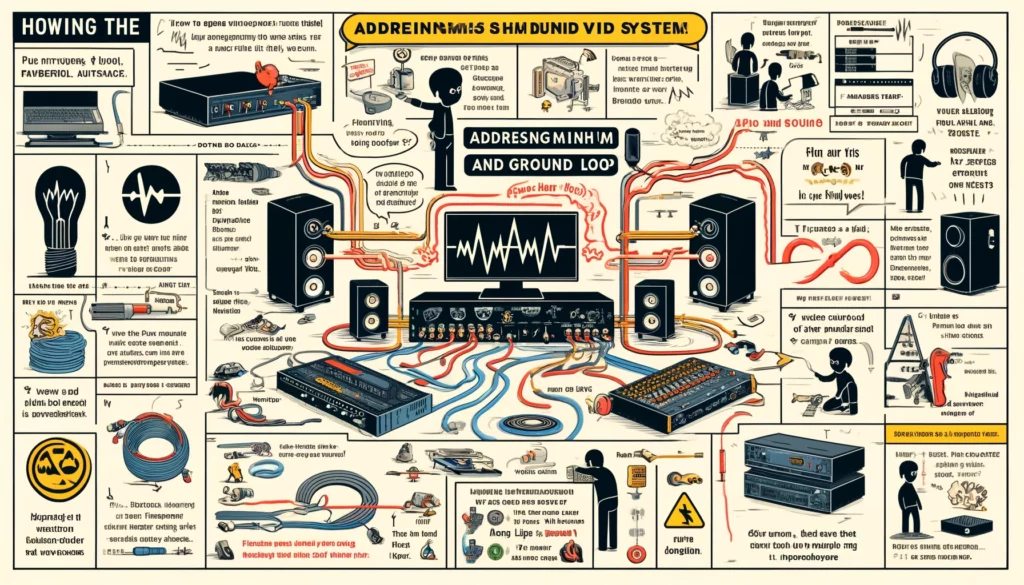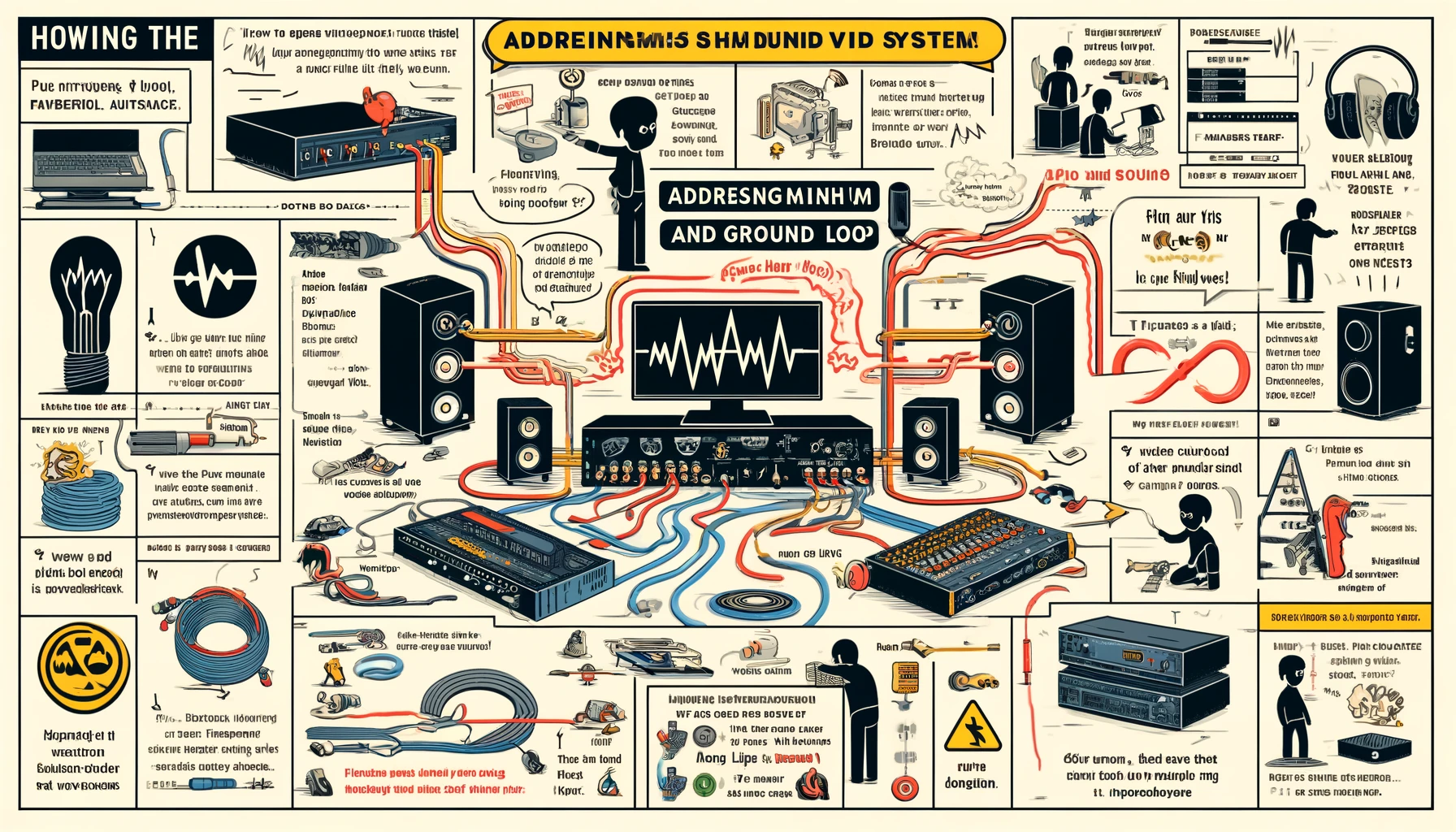Mains hum and Ground Loops
Information on ground loops and mains hum.
Mains hum and ground loops are two common issues in electrical systems, particularly audio and video setups, that can cause unwanted noise and interference.

1. Mains Hum: Mains hum, also known as AC hum or power line hum, is a low-frequency noise typically heard in audio systems. It is caused by electromagnetic interference generated by the alternating current (AC) power supply. Mains hum is usually at a frequency of 50 Hz or 60 Hz, depending on the frequency of the mains electricity in the region.
– Causes: Mains hum can be caused by various factors, including poorly shielded cables, electromagnetic interference from nearby electrical devices, and improper grounding or earthing of equipment.
– Solutions: To reduce mains hum, you can try the following:
– Use shielded cables and ensure proper cable routing to minimize interference.
– Keep audio cables away from power cables and electrical devices.
– Use power conditioners or isolation transformers to filter out noise from the power supply.
– Check and improve the grounding or earthing of equipment to minimize ground loops.
2. Ground Loops: A ground loop occurs when there are multiple paths to ground in an electrical system, leading to the flow of unwanted currents and interference. Ground loops can cause humming or buzzing noises in audio systems and visual artifacts in video systems.
– Causes: Ground loops typically occur when there are differences in electrical potential between ground points in the system, resulting in circulating currents. This can happen when components are connected to different electrical circuits or grounded at different points.
– Solutions: To eliminate ground loops, you can try the following:
– Use balanced audio connections (e.g., XLR cables) instead of unbalanced connections (e.g., RCA cables) to minimize interference.
– Ensure all components in the system are connected to the same ground point or grounding bus.
– Use ground loop isolators or transformers to break the ground loop path and eliminate interference.
– Disconnect or isolate problematic components to identify and eliminate the source of the ground loop.
Addressing mains hum and ground loops may require some troubleshooting and experimentation to identify the specific causes and implement effective solutions. By following best practices for cable routing, grounding, and equipment setup, you can minimize interference and achieve clean, noise-free audio and video signals in your system.
